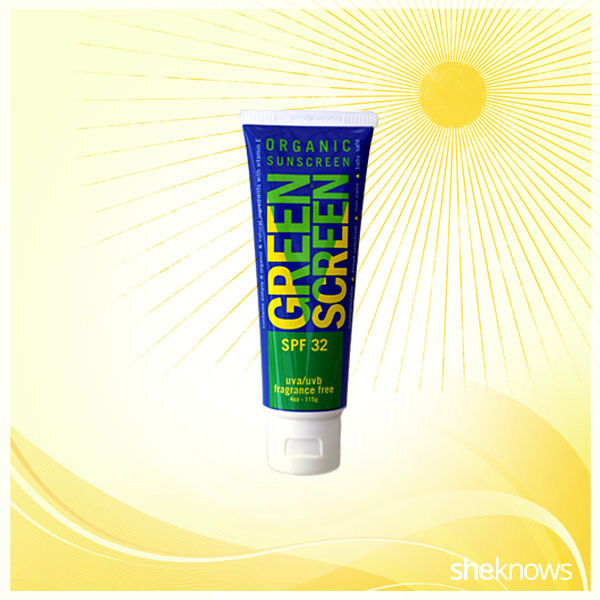

Of the chemical screens, avobenzone is the one that protects against UVA rays and has a lower toxicity profile than other screens-at least for now.
ORGANIC SUNSCREEN SKIN
In short, there are several, really good arguments for using a non-nano physical sunscreen made with zinc oxide and titanium dioxide: they are not absorbed by the skin they are not degraded by exposure to sunlight, making them more stable over time and there are often fewer and less toxic ingredients that make up the “inactive” ingredients in the product. PABA is not used as much as it once was, but there’s a fairly large population of people who are allergic to that ingredient by now. Another controversial chemical is retinyl palmitate, which can slow skin aging, but may actually accelerate the development of certain skin cancers when it comes in contact with ultraviolet light. There seems to be increasing evidence that oxybenzone, a very common chemical sunscreen, may act like estrogen in the body, which increases the likelihood that it will disrupt our innate hormone cycles. This is a much-argued point, and there is not enough science out there to back any extreme position. (I predict the answer will be that nanoparticles are icky, not only for your skin, but for our ecosystem, as well.) Is a barrier sunblock better than a chemical sunscreen?

Some researchers believe that nanoparticles get taken into skin cells where they heat up and accelerate sun damage, but the evidence is not conclusive yet. Nanoparticles complicate this issue, because they do get absorbed by the skin cells to some degree, and more work needs to be done to find out if this could have detrimental effects. It’s like the difference between a filter and a mirror-the filter breaks up the sunlight and deactivates it, and the mirror reflects it instead. Rather than filtering the rays of the sun and diminishing the harmful effects of UV light (this is the action of a chemical sunscreen), a physical sunblock sits on top of the skin and reflects the sunlight. Zinc blocks both UVA and UVB rays, making it a more desirable sunscreen ingredient than titanium dioxide, which blocks mostly UVB rays. They are also referred to as barrier sunblocks. Zinc oxide and titanium dioxide are the two physical sunblocks used in the natural sunscreen industry. Last, but definitely not least, many chemical sunscreens are hugely toxic to the marine environment, and how can you feel good reading a book on the beach when you know that going in the water might hurt the coral reef? What is a physical sunblock? Also, watch for a “non-active” ingredient called methylisothiazolinone-a common preservative in sunscreens and baby wipes that is highly allergenic to more and more people.
:max_bytes(150000):strip_icc()/cdn.cliqueinc.com__cache__posts__249688__organic-sunscreens-249688-1518818693373-main.700x0c-29d9a3d250634dab86e2d7abcb8dfa7c.jpg)
Specifically, the sunscreen ingredients oxybenzone and octinoxate are estrogenic and allergenic. Most widely-available sunscreens contain not only sun protection chemicals, but parabens, fragrance, phthalates, and multiple ethoxylated ingredients, as well as being packaged in an aerosolized can: that knowledge alone is a great reason for choosing a non-toxic sunscreen over a traditional brand. Why should I choose an organic sunscreen over a mainstream one? In chemistry-speak, it is an inorganic compound.Īll this said, when regular people (as opposed to chemists) refer to organic sunscreens, they are usually talking about a barrier cream (zinc and/or titanium) that has fewer and healthier ingredients than a mainstream sunscreen you might find in the grocery store. A less confusing term would be “non-toxic sunscreen,” as it implies that we are comparing a more environmentally-aware product with a traditional sun protection product. Zinc oxide has the chemical formula ZnO-it's a zinc molecule and an oxygen molecule. The barrier chemicals, like zinc and titanium, are called “inorganic”, because they are not carbon-based.

Benzene (C6H6), a petrochemical and a known carcinogen, is an ORGANIC compound! (Insert horrified gasp here, please.) That's what "organic chemistry" is all about-the study of molecules with carbon backbones and carbon-hydrogen bonds. Technically, an “organic” sunscreen is one that uses carbon-based chemicals, like oxybenzone, avobenzone, and octinoxate, to diminish the impact of ultraviolet radiation. The word organic is incredibly confusing in many situations, but especially when referring to sunscreen.


 0 kommentar(er)
0 kommentar(er)
